Mystras, Greece: Your Complete 2024 Travel Guide by a Local
Mystras, Greece is a UNESCO world heritage site located in the Lakonia region of the Greek Peloponnese. This historic city is a highlight of any trip to the rugged Peloponnese (and any Greece itinerary in general). The underrated destination continues to fly under the radar and is overlooked by most visitors to Greece. But if you take the time to visit, you will surely be glad that you did.
Mystras, Greece dates back to the 13th century when it was built by the Frankish Prince William II of Villehardouin. The settlement was once the capital of Lakonia before ancient Sparta was founded.
Today, it essentially exists in two halves. There is the Mystras archeological site, which is filled with spectacular churches, monasteries, convents, and palaces, and then there is the modern-day village of Mystras which has developed nearby. Both are charming in their own right.
Mystras, Greece
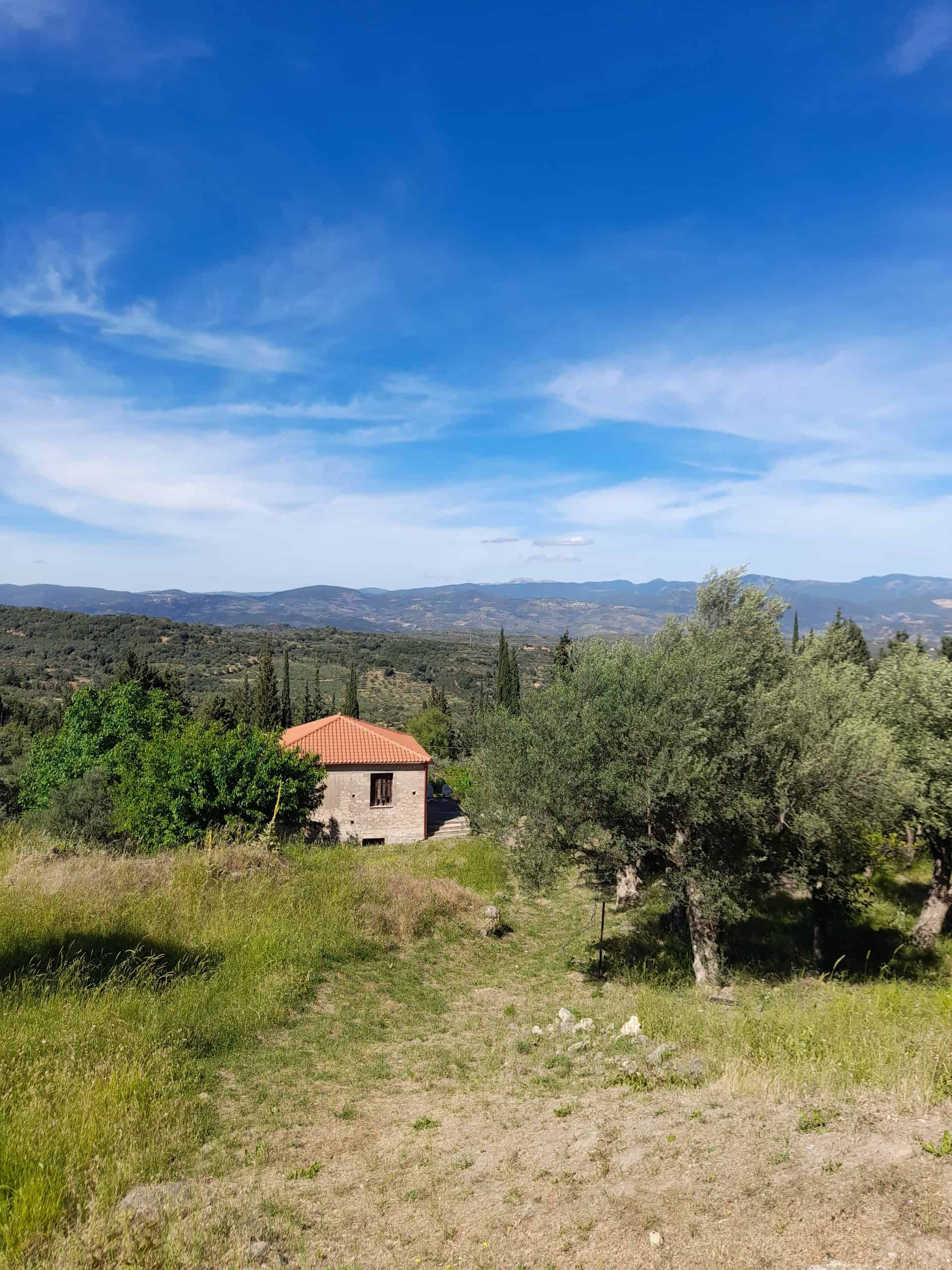
Mystras Greece is a great place to spend a day or two as part of a wider Peloponnese itinerary or on a dedicated day trip from Athens. The highlight of visiting is, of course, exploring the old archeological site.
After being founded by Prince William II of Villehardouin in 1249 CE, the settlement was later surrendered to the Byzantines, who made it the capital of the Despotate of Morea.
Mystras thrived during the 14th and 15th centuries and quickly established itself as an intellectual hub of the Byzantine era. Many historians believe it was the second most important settlement after Constantinople (now Istanbul). When the Byzantine Empire fell, the Ottoman Turks conquered the city in 1640.
The Venetians captured Mystras in 1687 and used it as a base for their silk production and trade until the city was eventually abandoned in 1832 as the residents moved to Sparta. In 1989, it was recognised as a UNESCO world heritage site.
Today, the modern village is also charming in its own right and is filled with quaint tavernas, coffee shops, and teahouses. The Lakonia capital of Sparta is just 5km/10 minutes away.
Things to do in Mystras Greece in 2024
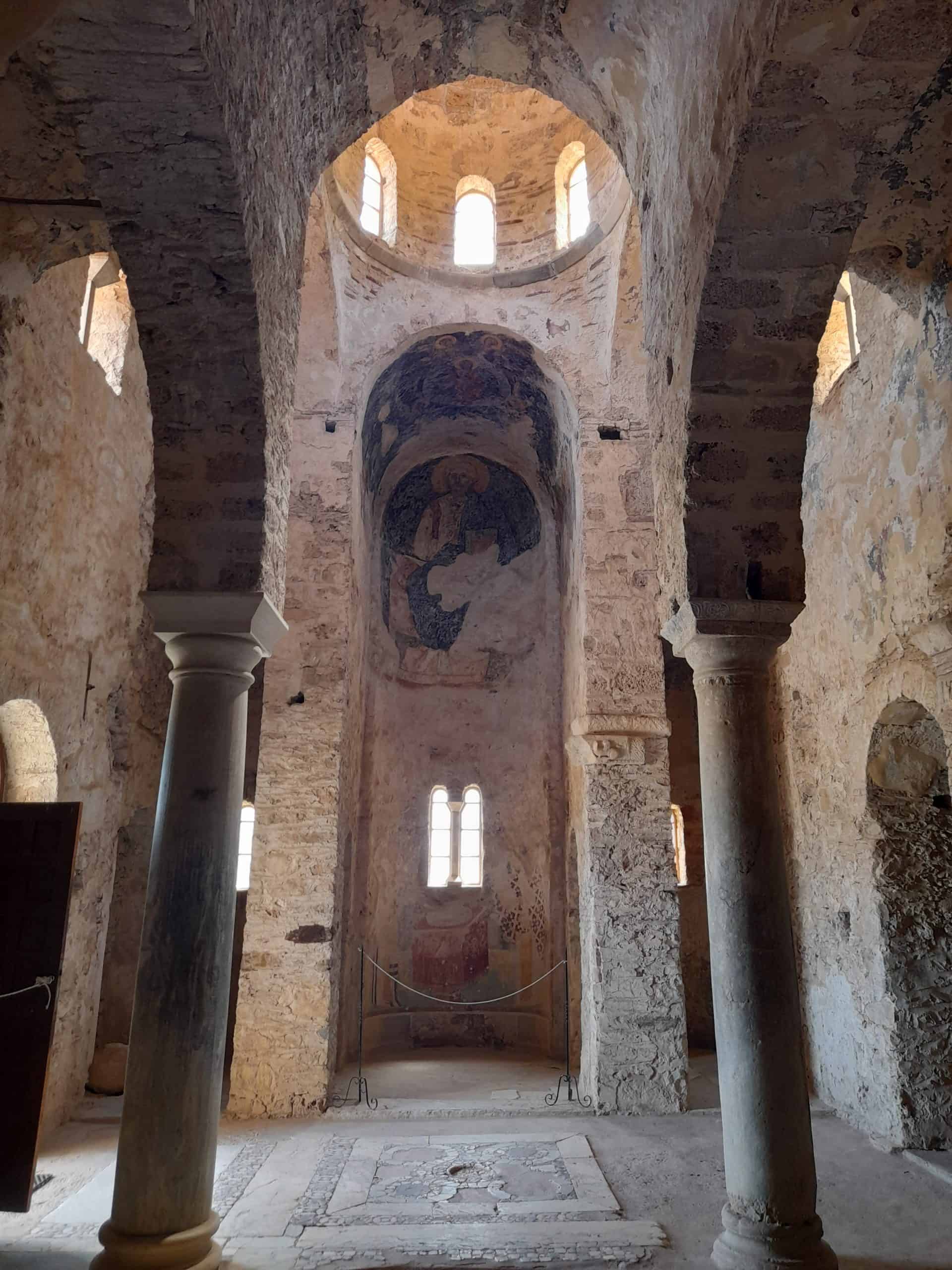
Mystras (pronounced Mis-trah) sits in the foothills of Mount Tagyetos surrounded by lush greenery and verdant olive groves. From the road and the modern village, it is hard to grasp simply how vast the archeological site is as the only thing you can really see from here is the church.
It is important to note the scale of Mystras. Today, Sparta is the capital of the Lakonia region of Greece and it is home to just 16,000 people. By contrast, Mystras was once home to 40,000 residents!
Pantanassa Monastery
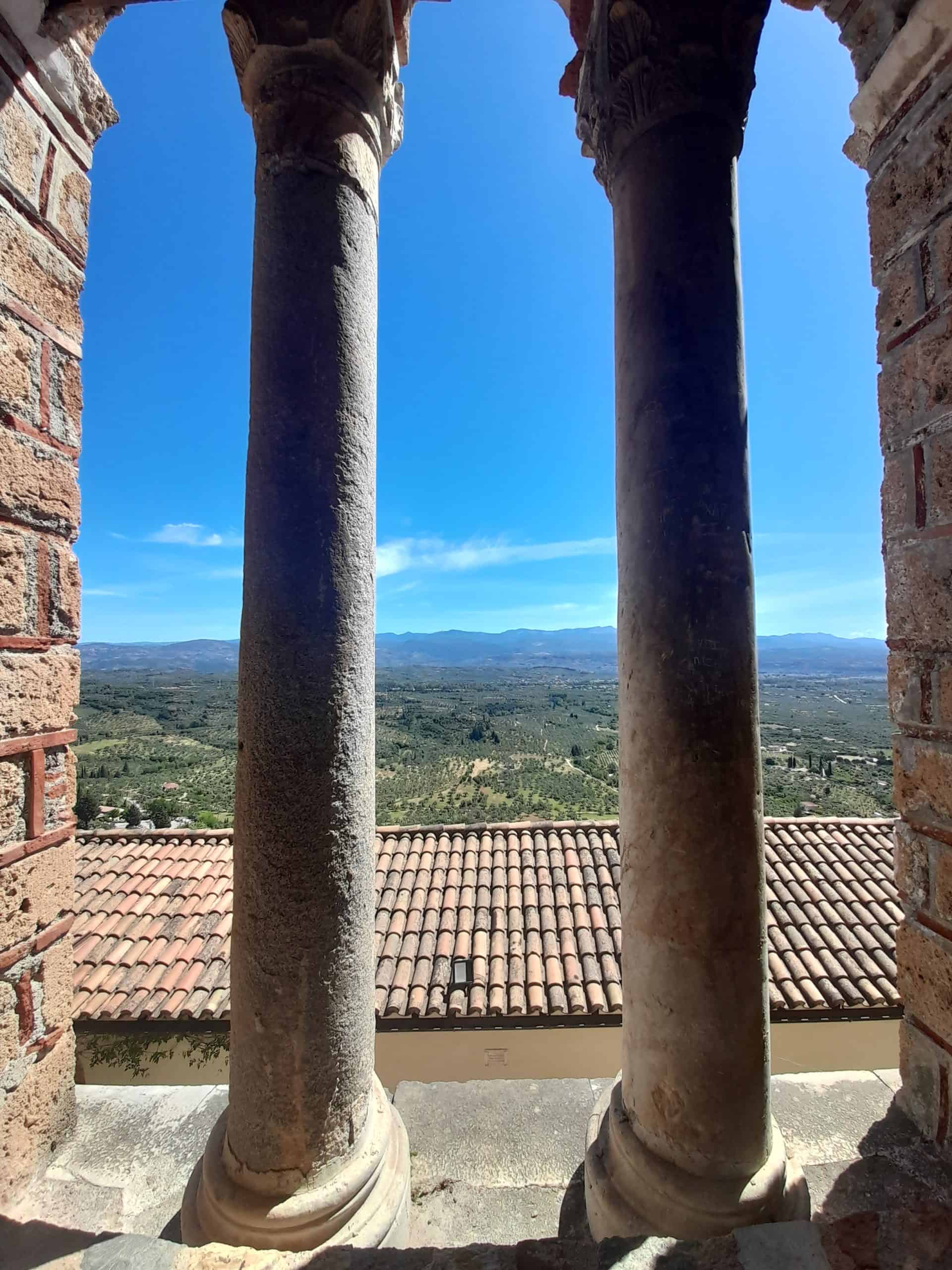
Of the various centuries-old monasteries scattered around Mystras, the Pantanassa Monastery (Μονή Παντανάσσης) is the only one that still functions today. Several elderly nuns still live within it and you may catch a glimpse of them pottering around the rooms and courtyards during your visit.
The monastery dates back to 1428 when it was founded by Giannis Frankopoulos, a chief minister of the late Byzantine Despotate of the Morea. The church and its bell tower exhibit an interesting blend of Gothic and Byzantine architectural styles and the interiors of the monastery are decorated with vibrant frescoes depicting scenes from the bible.
Monastery of Panagia Perivleptos
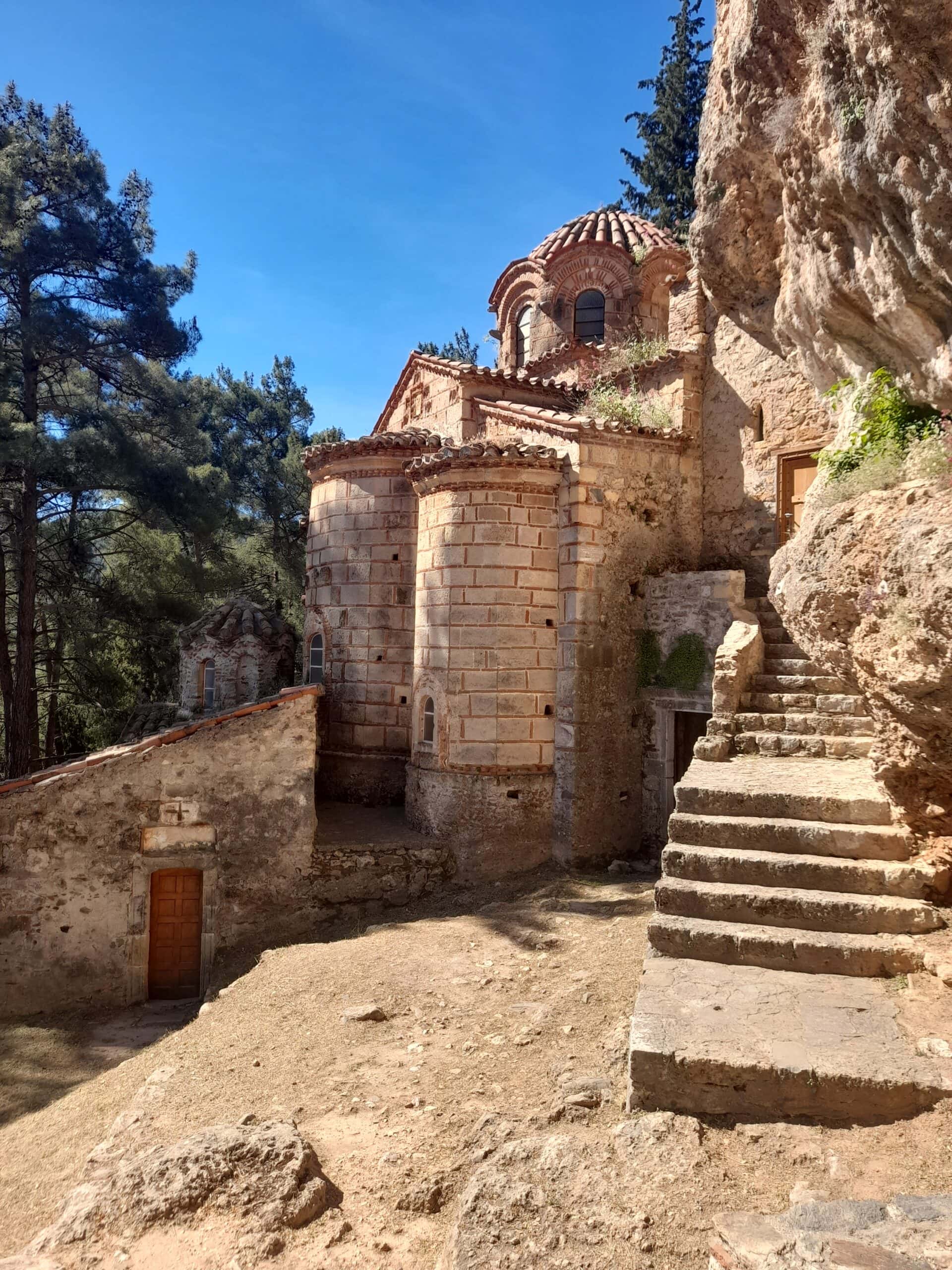
The Monastery of Panagia Perivleptos is a late Byzantine-era monastery in Mystras, Greece. It was likely built in the mid-14th century by the first Despot of the Morea, Manuel Kantakouzenos, and his wife Isabelle de Lusignan.
It was named after one of the most celebrated monasteries of Byzantine Constantinople. Perivleptos stands out above the other churches in the Mystras complex because it has been unusually carved into a rock cave.
The monastery church is a three-aisled basilica. The interior is richly decorated with frescoes, some of which date back to 1348 and 1380 and are rare examples of late Byzantine cycle art.
There is a large painting of the Pantokrator (Byzantine depiction of Christ) at the top of the dome, surrounded by profits. The monastery was abandoned in the 17th century, but it has been restored and is now open to the public. Today, it is one of the most important monuments in Mystras.
Cathedral of Agios Demetrios
The cathedral of Agios Demetrios is the oldest surviving religious structure in Mystras Greece. It was founded in 1270 as a wooden-roofed basilica.
Eugenios started the first constructions of the cathedral and he is also buried in a tomb on-site. His successor, Theodosios is credited with completing many of the paintings and frescoes inside.
Palace of the Despots
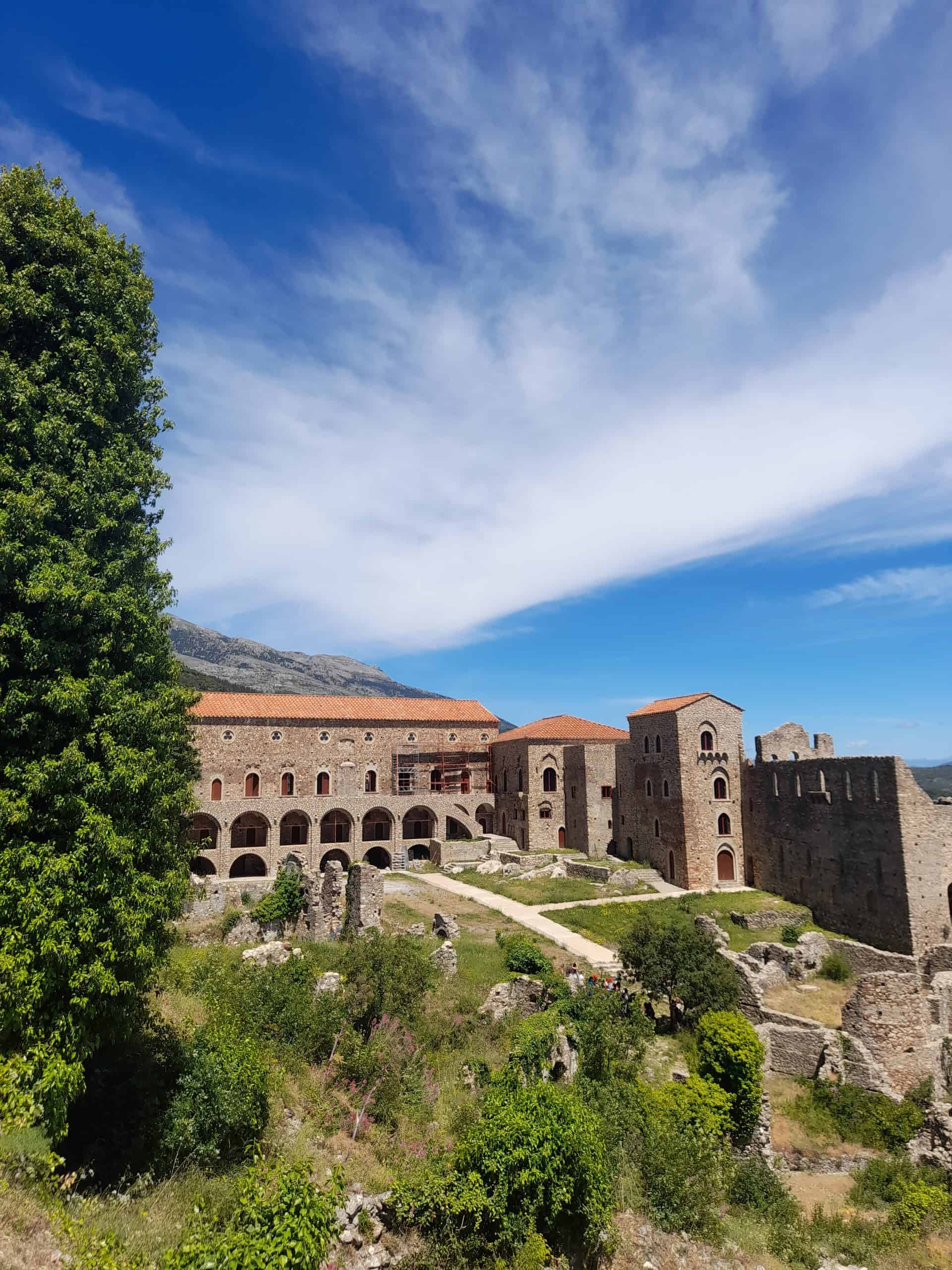
The Palace of the Despots, also known as the Palataki Mansion, overlooks the square of Ano Chora.
This grand complex went through various stages of construction from the 1200s to the 1400s. Initial construction was started by the Franks and eventually completed by the Byzantines.
Despots (aka the emperors’ second sons) resided within the palace. It also served as the residence of the governor (kephale).
Mystras Archeological Museum
The Archaeological Museum of Mystras can be found close to the West Gate entrance to the complex, near the Agios Demetrios Cathedral. Entrance to the museum, which first opened its doors in 1952, is included in the standard Mystras admission ticket.
The exhibits are organised in chronological order and spread across two floors. They showcase all manner of interesting Byzantine and post-Byzantine sculptures, clothing items, jewelry, coins, and daily objects.
Other notable churches in Mystras
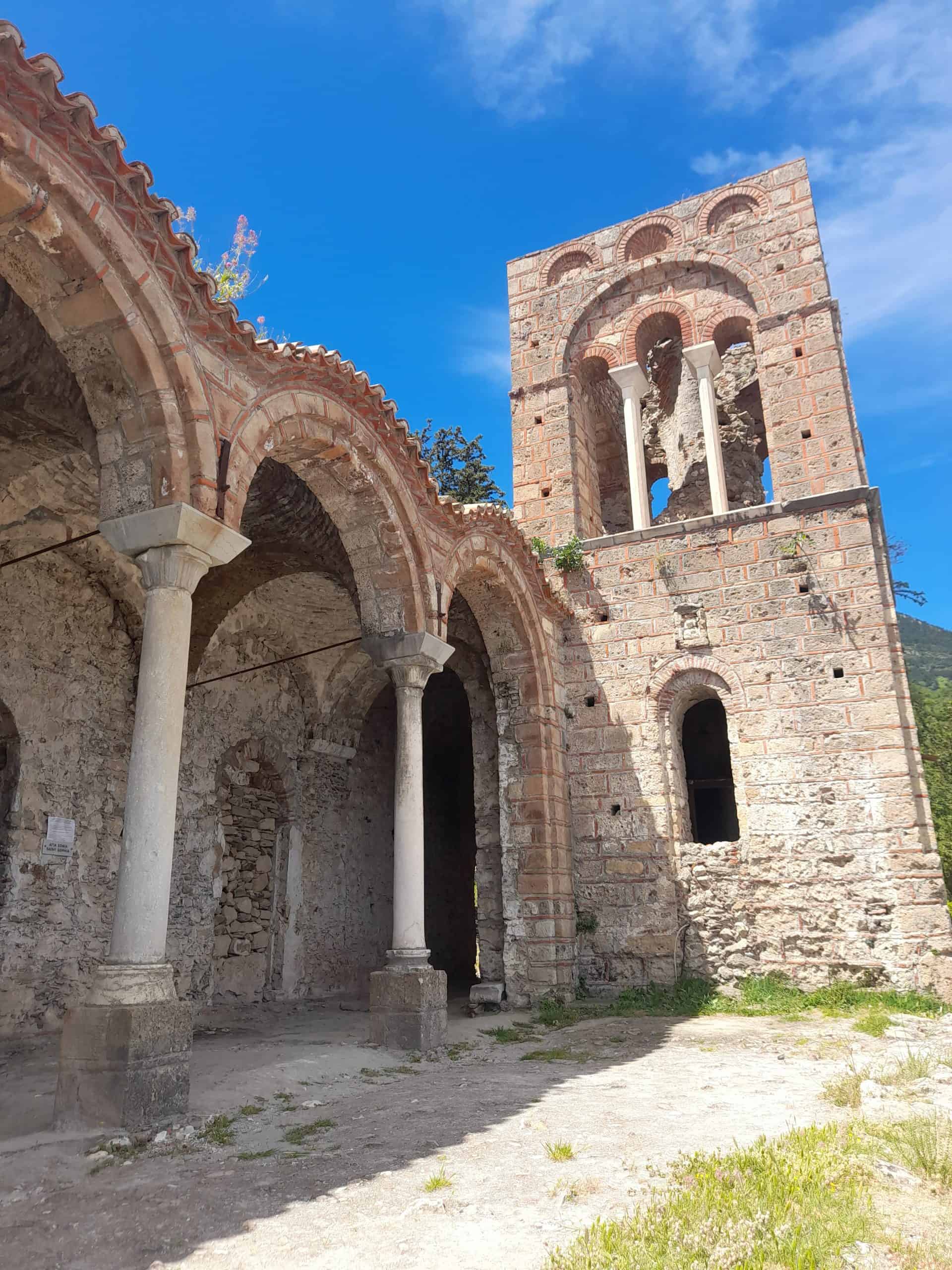
A number of Ancient Churches are scattered throughout the Mystras site and it is possible to enter all of them.
The oldest church in Mystras is the Church of Agia Theodoroi, followed by the 14th-century Church of Agia Sofia which was used by palatial nobles. The Church of Panagia Hodegetria contains particularly beautiful frescoes.
The paintings inside depict various scenes from the bible, including one vibrant mural that shows the miraculous healing of a blind man.
Other Attractions Close to Mystras
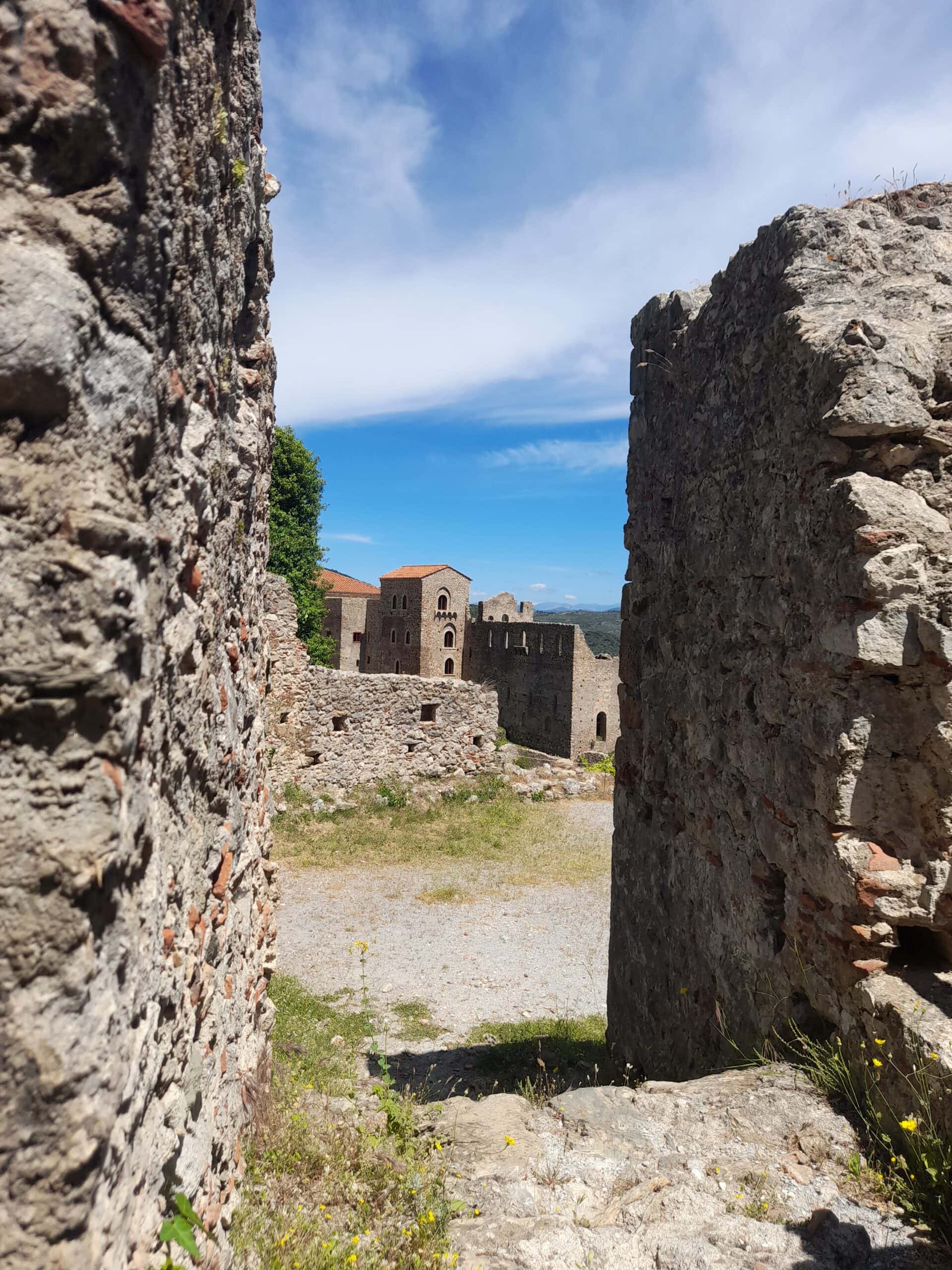
Although the Mystras archeological site is most peoples raison d’etre for travelling to this part of the Peloponnese, there are lots of other interesting things to see and do nearby too. From Mystras, you can continue onwards to the little village of Pikouliankia, to Sparta and to Kalamata.
Some further attractions in the area that you may wish to add to your radar are detailed below.
The modern village of Mystras
Enjoy a leisurely morning in Mystras village, having breakfast in the square. There are several beautiful Orthodox churches here whose interiors are adorned with vibrant frescoes.
It is a very special experience to pass by when a church service is being held, and the melodic hymns are played out around the village over loudspeakers. Well-dressed yiayias (grandmothers) donning headscarves dash through the village to attend the morning services.
Mystras provides a great opportunity for people-watching and observing true Greek traditional life. There are many stores here selling excellent local produce.
Regional cheeses, jars of honey, olive oils, and spoon sweets can be found in the quaint shops here. They make excellent souvenirs and many of the stores here offer a complimentary tasting before you buy.
A highlight of any Greece itinerary is found in sampling the local cuisine. Mystras does not disappoint in that regard. In the late afternoon and early evening, stop by one of the numerous tavernas here for sumptuous Greek classic dishes and marinated meats.
Modern Sparta
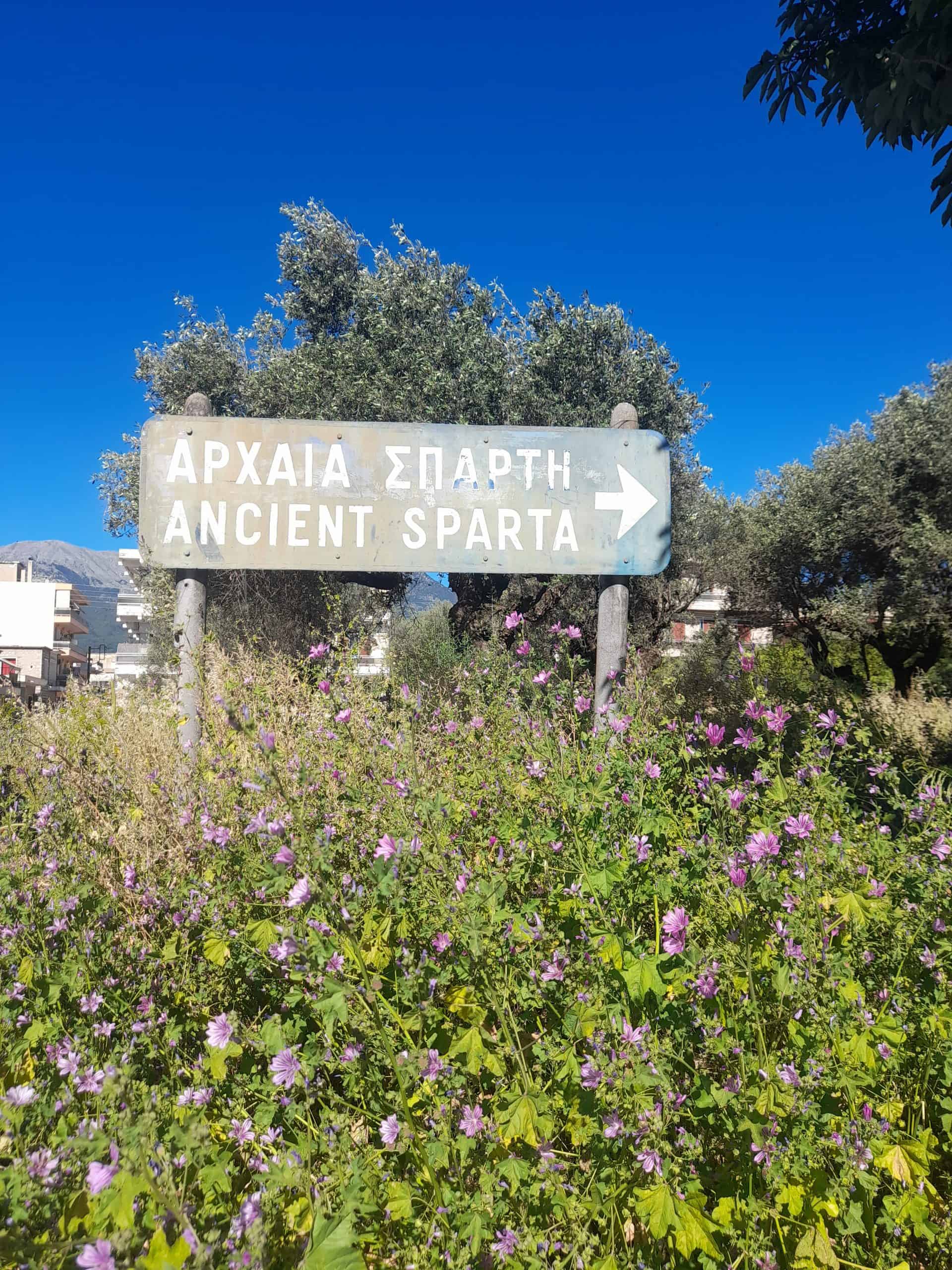
Ancient Sparta is globally renowned for being the home of Leonidas and his heroic Spartan army. This part of Greece is steeped in history but unfortunately, most of the ancient sites here are very poorly preserved.
Nonetheless, it is still worth visiting. The modern city is a great place to stop for dinner or a Greek coffee as you people-watch in the central plateia. The restaurants of Κεχριμπάρι (“Amber”) or Kapari are local favourites.
Visit the ruins of ancient Sparta, the Sanctuary of Artemis Orthia, and the tomb of Leonidas. Then, browse the exhibits at the Archaeological Museum of Sparta.
Pikoulianika
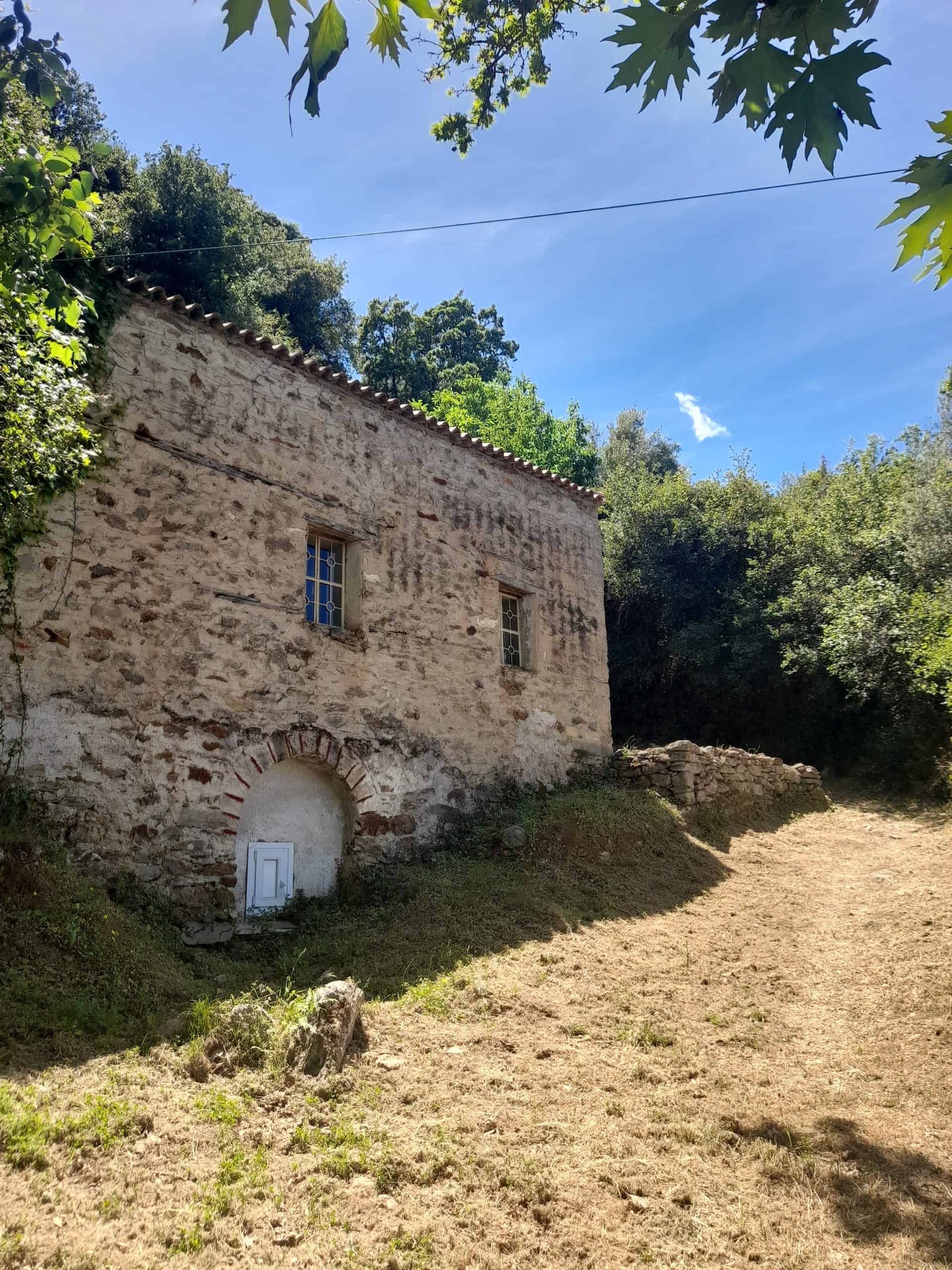
Pikoulianika is a tiny village located just 4km away from modern Mystras, just past the Byzantine old city. It is tiny, covering a surface area of just one square mile. But nonetheless, it is pleasant to venture here in order to dine at one of the excellent restaurants in the village.
Pikoulianika is known as the “balcony of Lakonia” on account of the sweeping vistas of the Peloponnese that can be enjoyed from here. On the opposite foothill of Taygetos, you can see the various ruins of Mystras’ old town.
While there are Greek foods that are globally renowned like moussaka and pastitsio, each region of Greece also has its own regional delicacies. In Lakonia, you can try Lakonia sausages, handmade and prepared with sage and a variety of spices.
Pikoulianika Tavern is an excellent eatery run by friendly local Maria. Skreka is another local favourite restaurant. Both places utilise the freshest, locally sourced ingredients in their dishes.
Meals are best enjoyed accompanied by locally-sourced Greek wines.
Mount Taygetos hiking trails
Mystras sits on the slopes of Mount Taygetos and there are a plethora of hiking trails that depart from the village.
If you are an experienced hiker, you may want to conquer the hike to the mountain’s 2407m peak. This entails a full day of hiking and you can opt to do so independently or with a local guide.
Alternatively, there are several smaller, more manageable trails that you can attempt that take just a few hours. They lead you past beautiful woodlands, hidden waterfalls, and small churches.
Keadas Cave
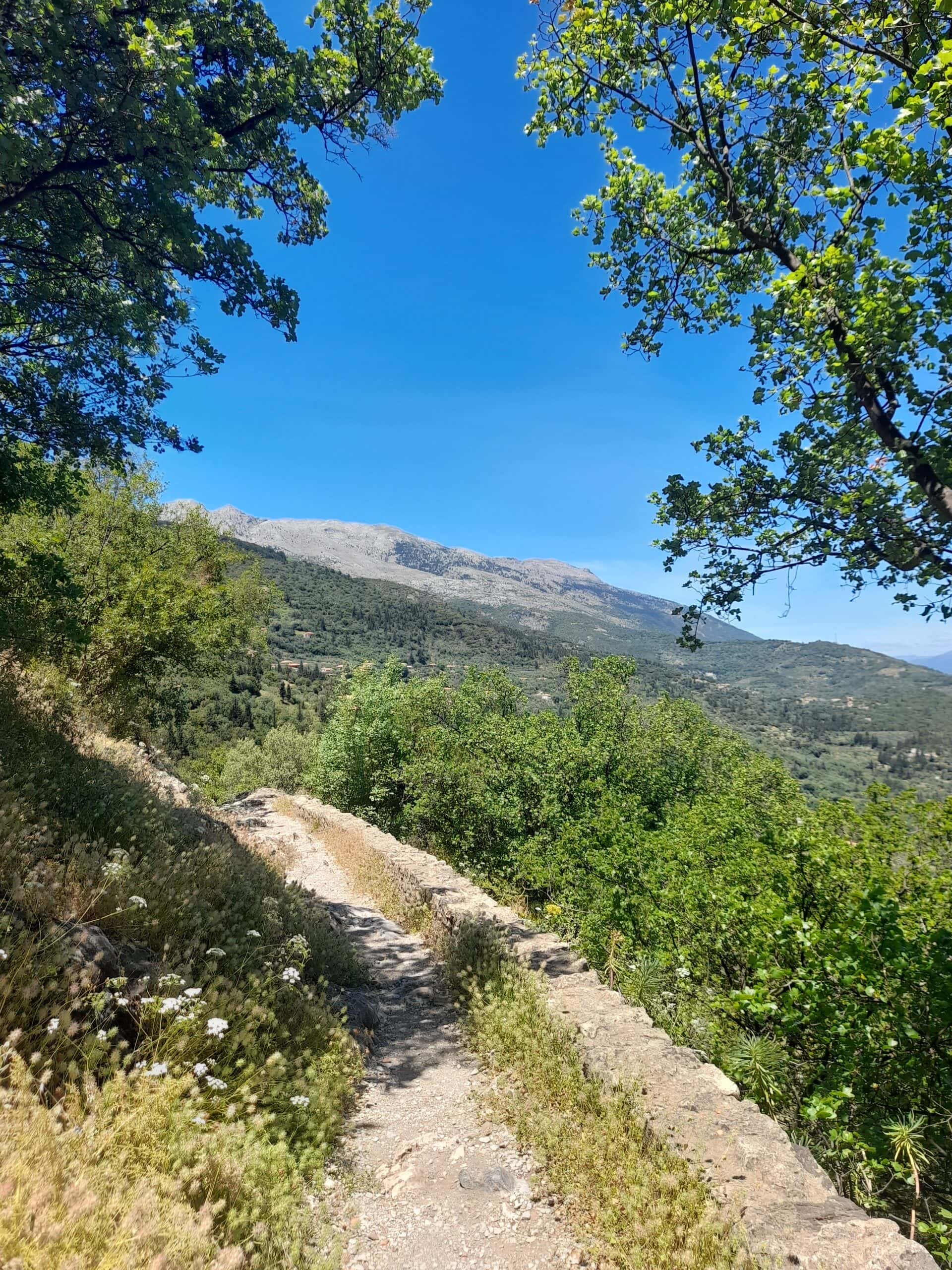
Keadas Cave sits close to the village of Tripi. There isn’t any public transport that runs here so it can really only be reached by car unless you negotiate a trip price with a local Sparta taxi company.
There is a horrendous local legend that says that Spartans would throw their weak and disabled infants into this cave. After all, in Spartan culture, it was important for men to be strong, macho warriors.
Later though, archaeologists later found that the bones recovered here were those of healthy young men, not children or the infirm. A popular theory now is that Keadas cave was used as a place to throw prisoners and criminals.
Where to Stay in Mystras Greece
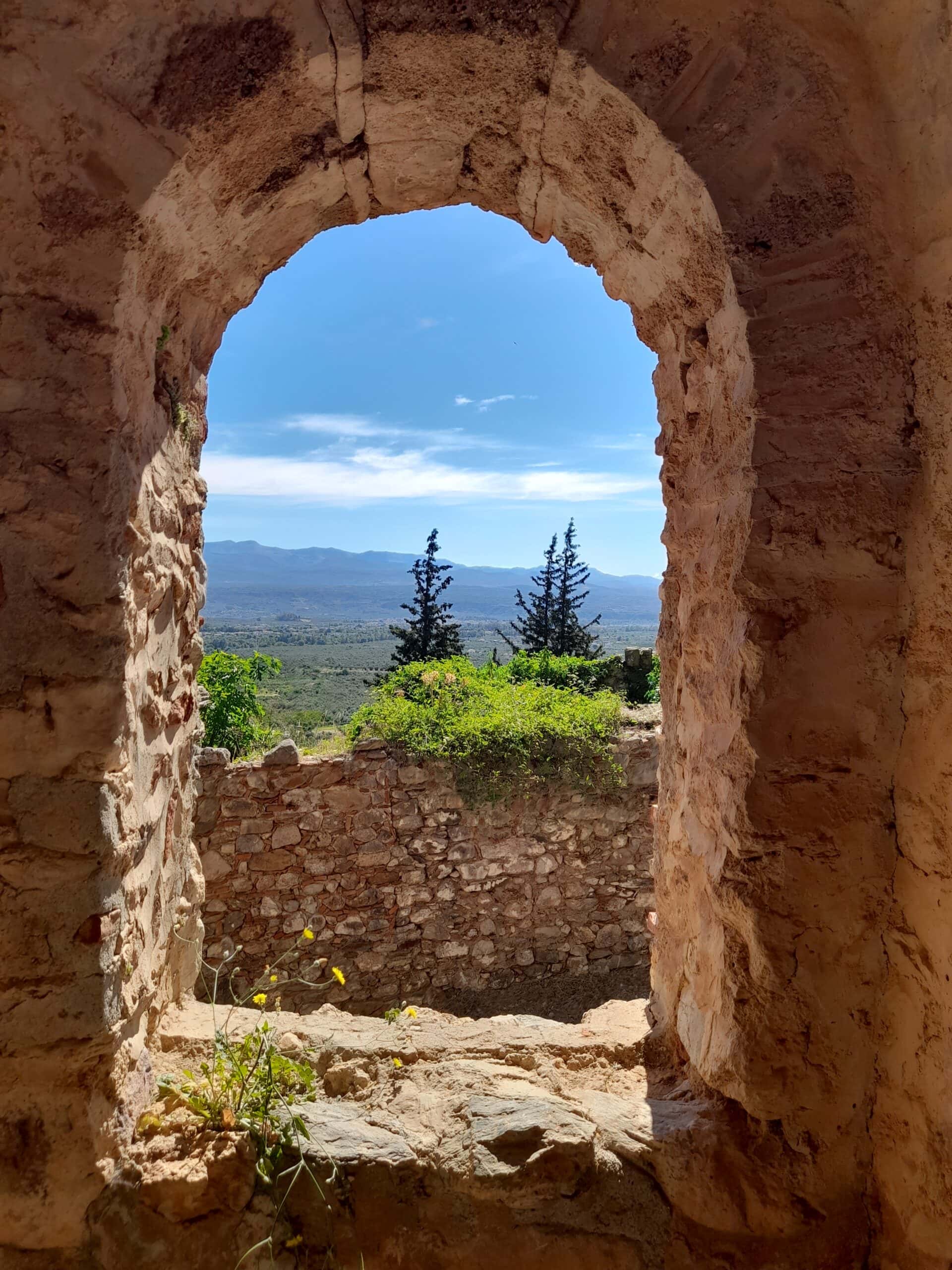
There is a selection of quaint hotels and guesthouses in and around Mystras to suit every budget and travel style. Rooms can be found for as little as €35 per night, depending on the season.
A selection of some of the best accommodation choices is provided below. You could also consider staying in Sparta or Pikoulianika.
Costs are generally lower if you stay outside of Mytras centre. However, staying in Mystras village as I did means that you can just roll right out of bed and head to the archaeological site.
Mystras Castle Town
Where: Mystras Castle Town, Epar. Od. Spartis-Mistra, Mistras 231 00
Mystras Castle Town is a beautiful traditional guesthouse that is managed by a sweet local couple. If you stay here, you are greeted with a strong Greek coffee, fresh oranges, and sweet treats when you arrive.
The rooms are simple yet spacious and cosy. Their balconies offer excellent views of the rolling green hills and olive groves that surround Mystras and the property is situated in the heart of the village square.
Rooms start from 35 euros a night. Check the latest rates and availability here.
Kyniska Palace Conference & Spa
Where: Parori, Mistras 231 00, Greece
Kyniska Palace is a gorgeous five-star property that comes without the five-star price tag. It is situated in the beautiful countryside just outside of Mystras village.
Rooms start from around 100 euros and it is possible to get a spacious suite for just over 140 euros per night. The decor and plush furnishings, in gentle shades of eggshell and white, are classic and elegant.
A sumptuous breakfast is included, with menu options from across the world. Both a spa and a pool can be found on site – perfect for unwinding after a long day of sightseeing. Check the latest rates and availability here.
Mystras admission information
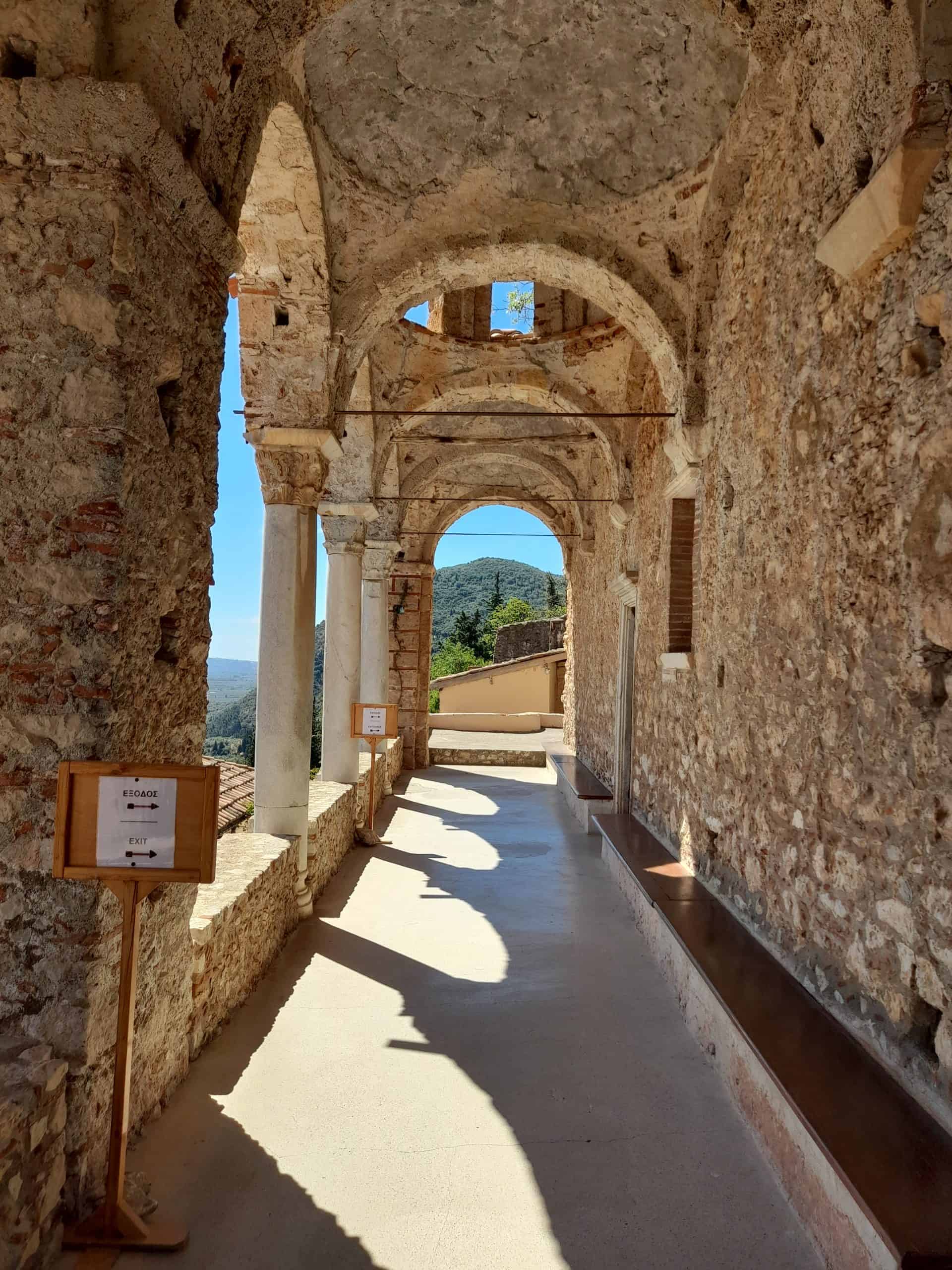
Entrance to the Mystras site is €12 per person during the summer and €6 during the winter, with concessions available for students, children, and the elderly. Admission to Mystras is free on certain days of the year as outlined below.
- 6th March – Melina Mercouri Day
- 18 April (International Monuments Day)
- 18 May (International Museums Day)
- The last weekend of September annually (European Heritage Days)
- 28 October (Oxi Day)
- The first Sunday of every month from November to March for the winter season
Opening times vary from season to season. In the summer months (April to October), the site is open from 08:00 am until 19:30 pm. In the winter, it is open from 08:30 am until 15:30 pm.
There is no dress code for exploring most of Mystras. However, since the Pantanassa Monastery is still occupied by nuns, you need to dress modestly when entering.
This means no cleavage on display, and women should cover their shoulders and legs. If you are not conservatively covered, you can borrow a pashmina from the entrance.
Getting to Mystras Greece
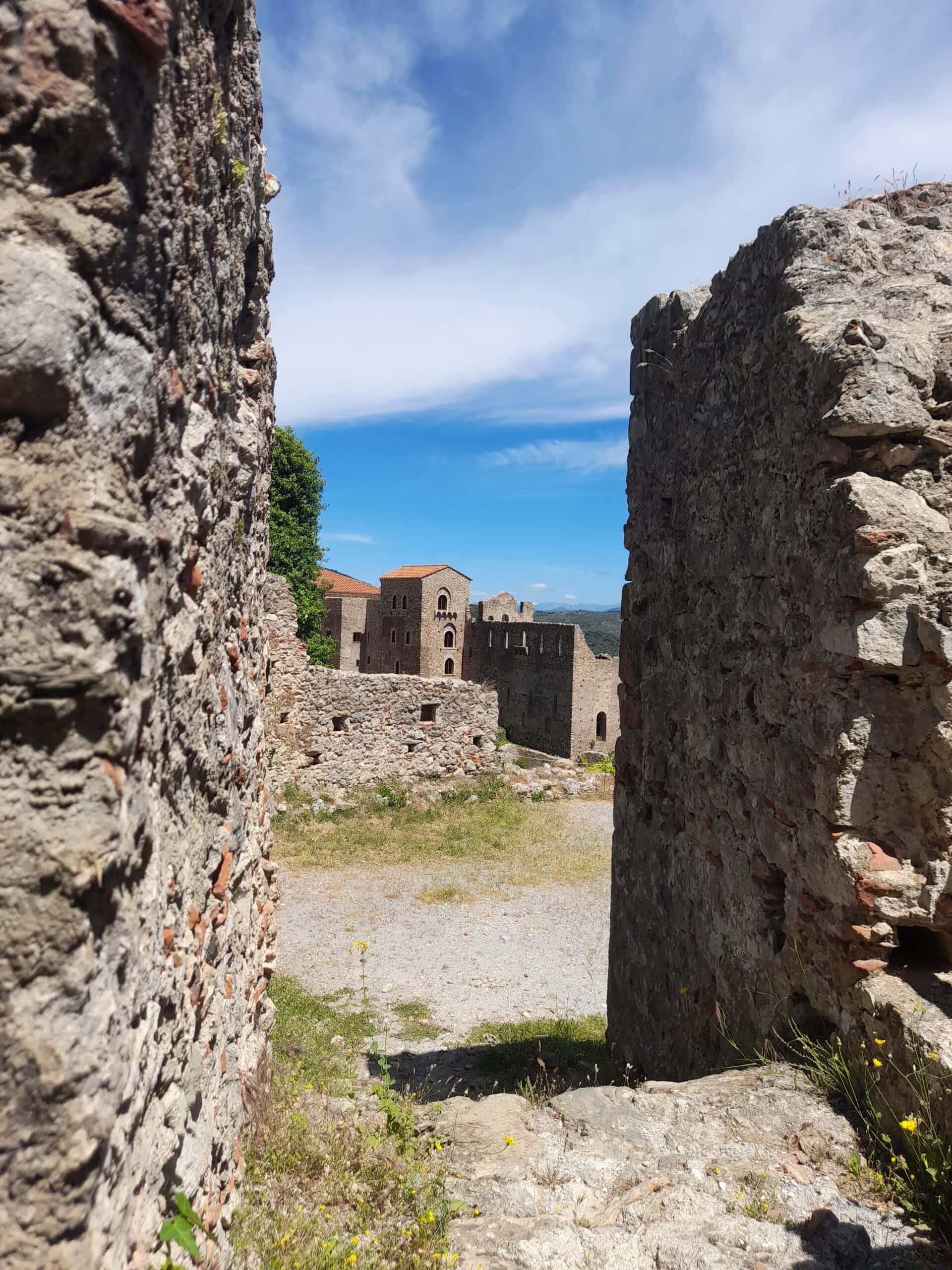
Assuming you are travelling from Athens, the best way to get to Mystras is by bus or car. There is no train line that services this part of Greece.
A handful of reputable local tour companies also offer excursions to Mystras and Sparta from various starting points in the country.
Taking the Athens – Mystras bus
There is no direct bus that runs from Athens to Mystras but you can take a bus to Sparta which is just 5km away. Buses depart from Athens Kifissos bus station (Leof. Kifisou 100) every 2-3 hours daily.
You can check the exact schedule via the KTEL Lakonias bus website here. The journey takes 3.5 hours with some buses making a brief stop in Tripoli en route.
The bus schedule is subject to change from season to season. For summer 2024, the earliest bus departs from Athens at 06.30 am, and the last bus leaves for Sparta at 20:00pm.
Tickets cost around €19 per person and can be bought in person at the Kifissos ticket office. (Just try to arrive at least 30-45 minutes before your scheduled departure time).
When you arrive in Sparta, you can take a cab to Mystras for just €7-€9. There are always plenty of cars lined up outside the station.
Driving to Mystras
Renting a car in Greece is not as intimidating as it may sound. Although the roads in Athens and Thessaloniki may seem chaotic, intercity roads and highways are pretty well-built.
A lot of major international rental providers have branches in Athens and at Athens airport – including Hertz and Avis. Discover Cars is a great platform that allows you to compare and contrast prices between dozens of rental companies so that you can secure the best deal.
It takes around 2 and a half hours to drive 150 miles to Mystras from Athens. Follow the Greek National Road to Corinth and then follow directions for Tripoli.
From Tripoli, follow the signs for Sparti (Sparta). Opting to rent a car provides you with a lot more flexibility and the chance to stop off en route.
One thing to keep in mind is that there are a lot of tolls between Athens and Mystras. Take plenty of change as only cash is accepted.
Take a Mystras tour
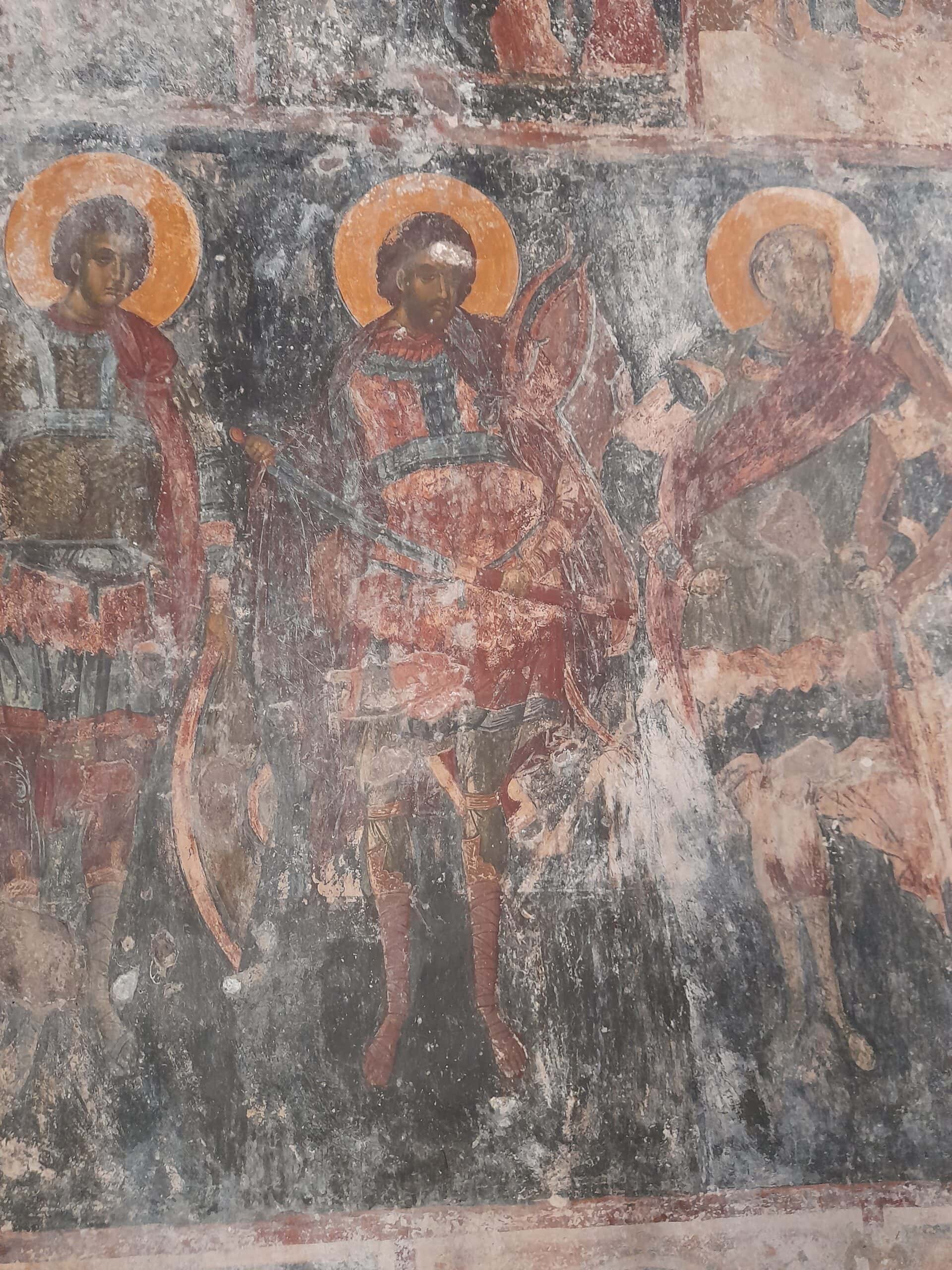
There are a couple of reputable tour companies based out of Athens, Thessaloniki, and other parts of Greece that offer organised tours to Mystras and Sparta. Opting to do a tour can take a lot of stress out of managing the logistics of your trip and figuring out how to get from A to B.
With most tours, your local guide will pick you up and drop you off back at your hotel. This private day tour by Olive Sea takes you to Sparta, Mystras, and the Corinth Canal.
FAQS about Visiting Mystras Greece in 2024
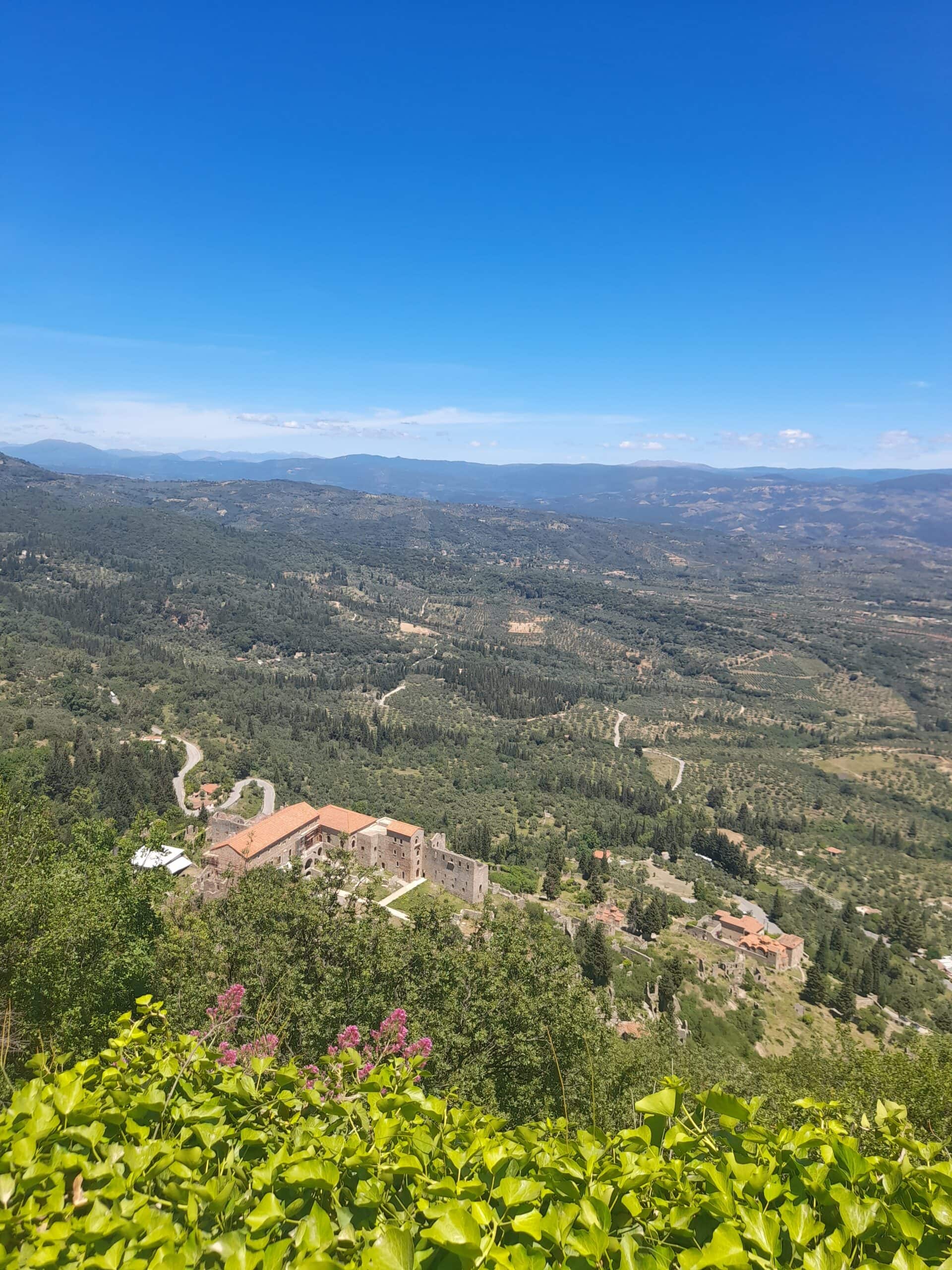
Do you have any further questions or concerns about visiting Mystras Greece and the wider Lakonia region in 2024 or beyond? The answers to some frequently asked questions on the topic are detailed below.
Hopefully, you will find the information you are looking for there. If not, please do not hesitate to reach out to me.
Is Mystras worth a visit?
Charming Mystras is well worth a visit, particularly if you are interested in Greek history and archeological sites. The ancient site is remarkably well preserved and there are numerous other cute villages and important historical sites in the wider area.
What is Mystras famous for?
Mystras is famous for its Pantanassa monastery which, to this day, is still occupied by nuns. The artwork displayed in the various buildings here is also credited with influencing Late Byzantine and Post-Byzantine art.
How long does it take to visit Mystras?
You should dedicate at least 3-4 hours to visiting Mystras. The archeological site is much larger than initially meets the eye and the complex is made up of a vast assortment of palaces, churches, caves, and other ancient structures.
If you are particularly into history, want to read every information plaque, or want to explore with a guide, you should dedicate as much as 5-6 hours.
How do I get from Athens to Mystras?
To get to Mystras, take a bus from Athens to Sparta and then transfer to a cab/minibus to Mystras. Buses depart every 2-3 hours daily from Athens Kifissos bus station.
What are the frescos in Mystras?
There are numerous frescoes on the walls and ceilings of Mystras, in various states of preservation. Some of the best can be found in the old churches such as the church of Our Lady Hodegetria, the Cathedral of Agios Demetrios, the Monastery of Our Lady Pantanassa, and the church of Agia Sophia.
When is the best time to visit Mystras?
It is better to travel to Mystras during the shoulder season if you can. (I.e. the spring months of March to May, or late September through November).
It gets extremely hot here during the summer months and temperatures often soar into the late thirties (in terms of degrees celsius). The photos in this post were all taken during a May trip to Mystras when it was already too hot!
If travelling during the summer is all that is suitable for your schedule, spend the night in the village nearby. Then, head out to the archeological site as early as possible so that you can avoid being outside during the heat of the midday sun.
Final thoughts on visiting Mystras Greece
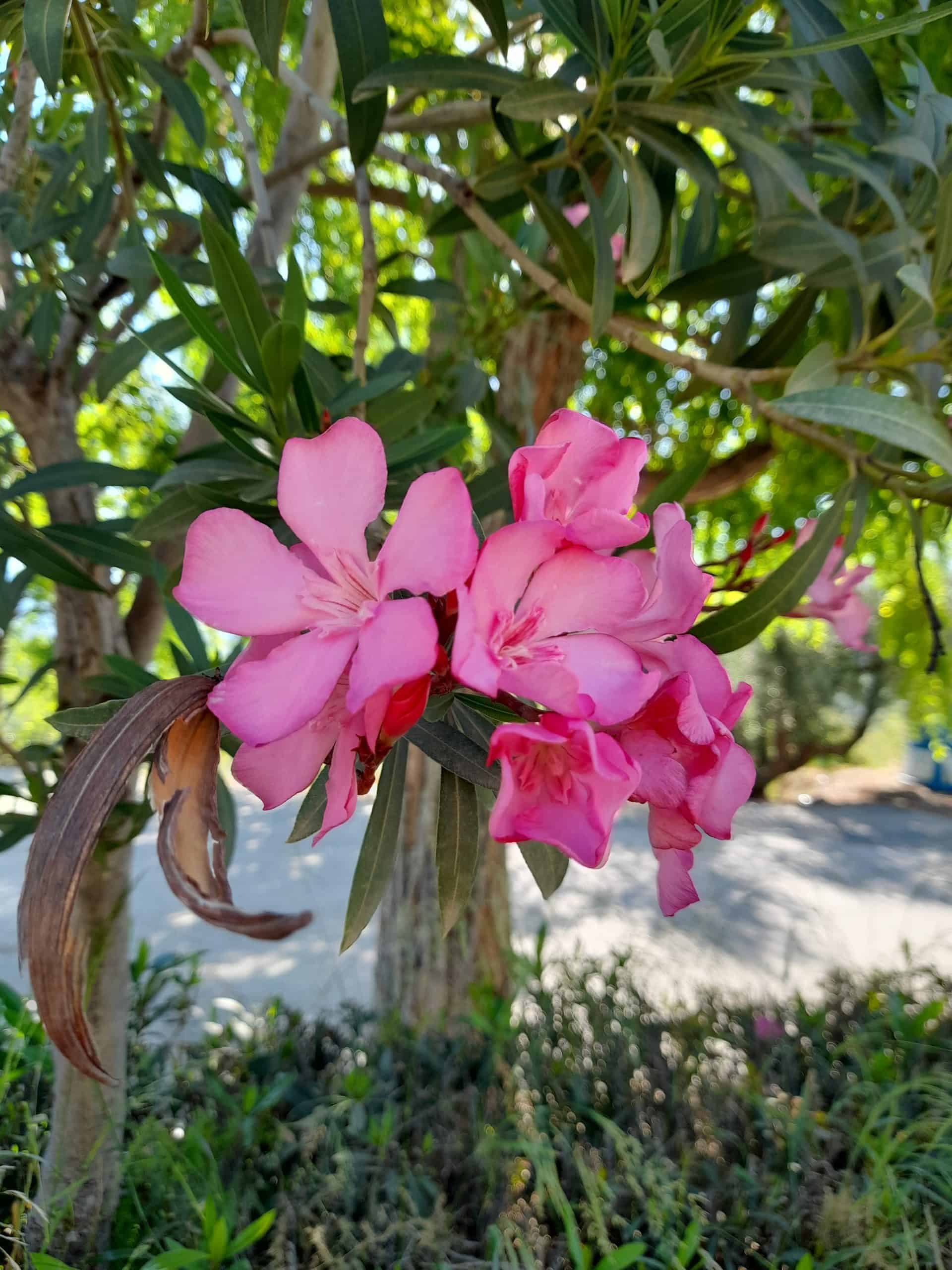
The ruins of Mystras are one of the best-preserved Byzantine sites in mainland Greece and arguably, all of Southern Europe. They are a highlight of any trip to the Southern Peloponnese and despite not being as well known as Greek ruins like Delphi, Pella and Sounion, they are just as fascinating to visit.
Do you have any questions about visiting Mystras, Greece, or organising your upcoming trip to Greece? Please don’t hesitate to contact me.
I have been living here since 2017 and have explored the country extensively during that time. You might also find it useful to join my Greece Facebook group – All Greek to Me which is a handy resource for people living and traveling in Greece.
Safe travels and enjoy Greece. Geia sou! Melissa xo
